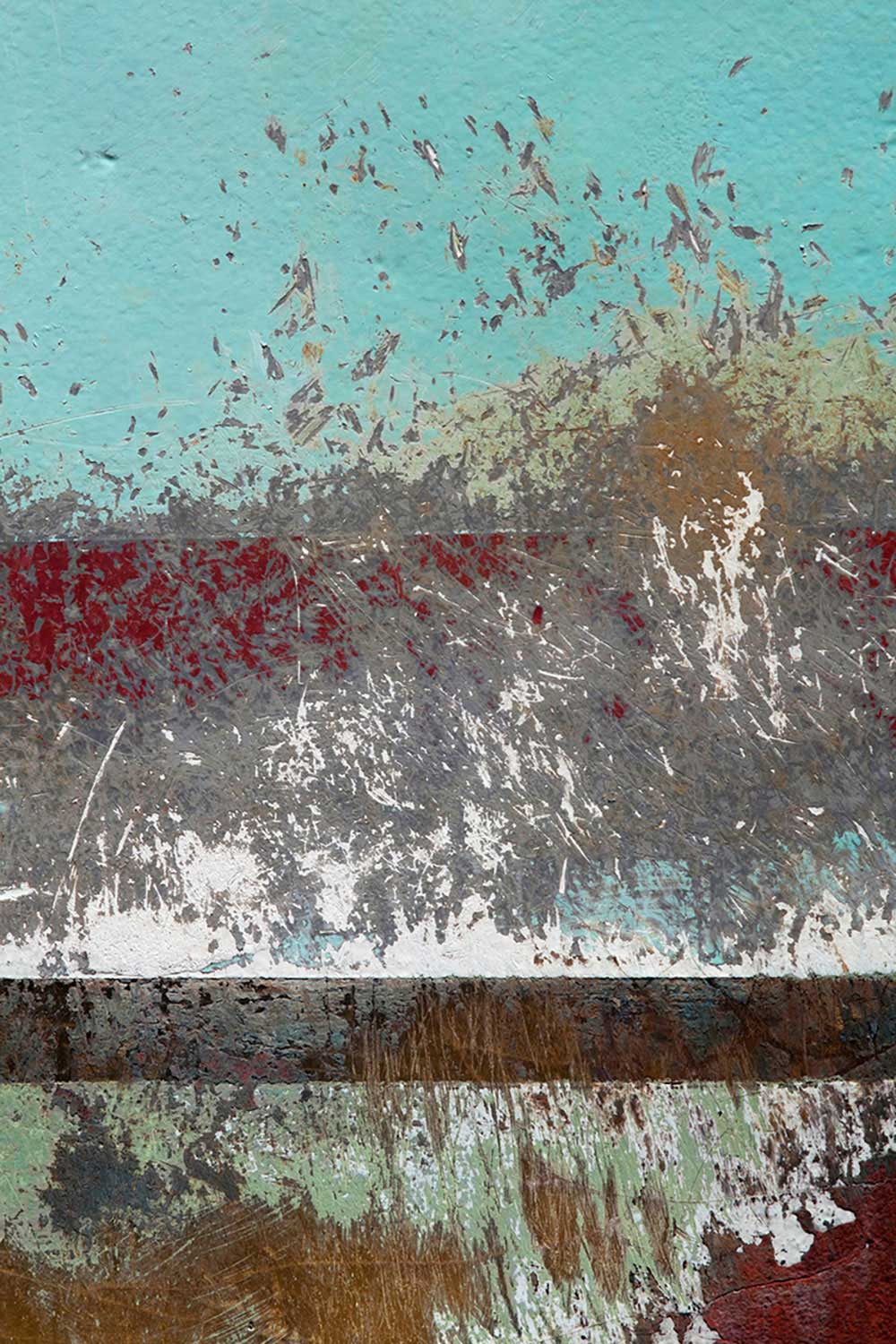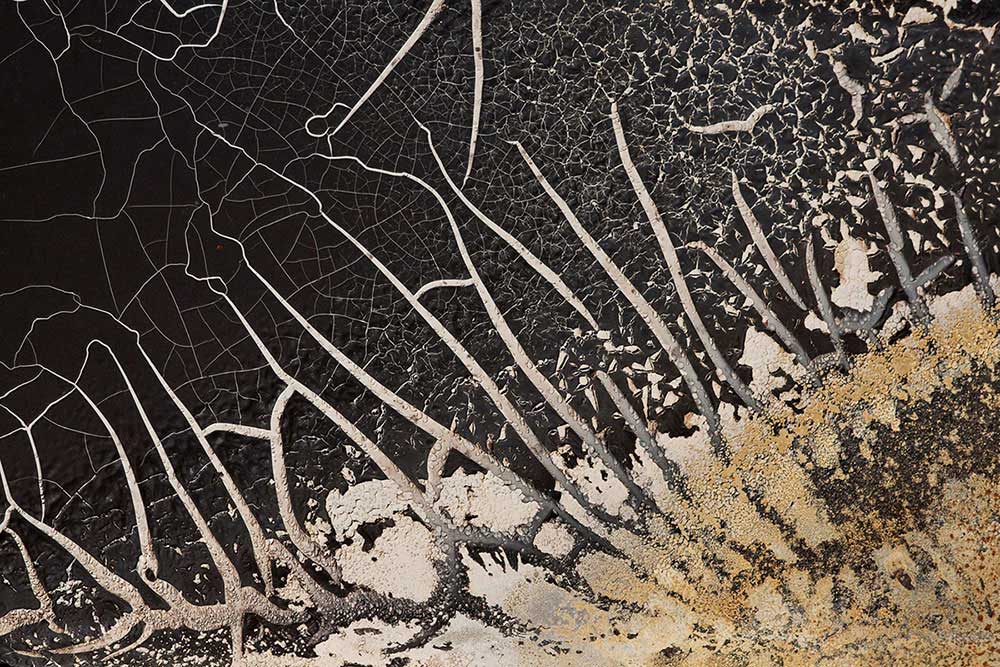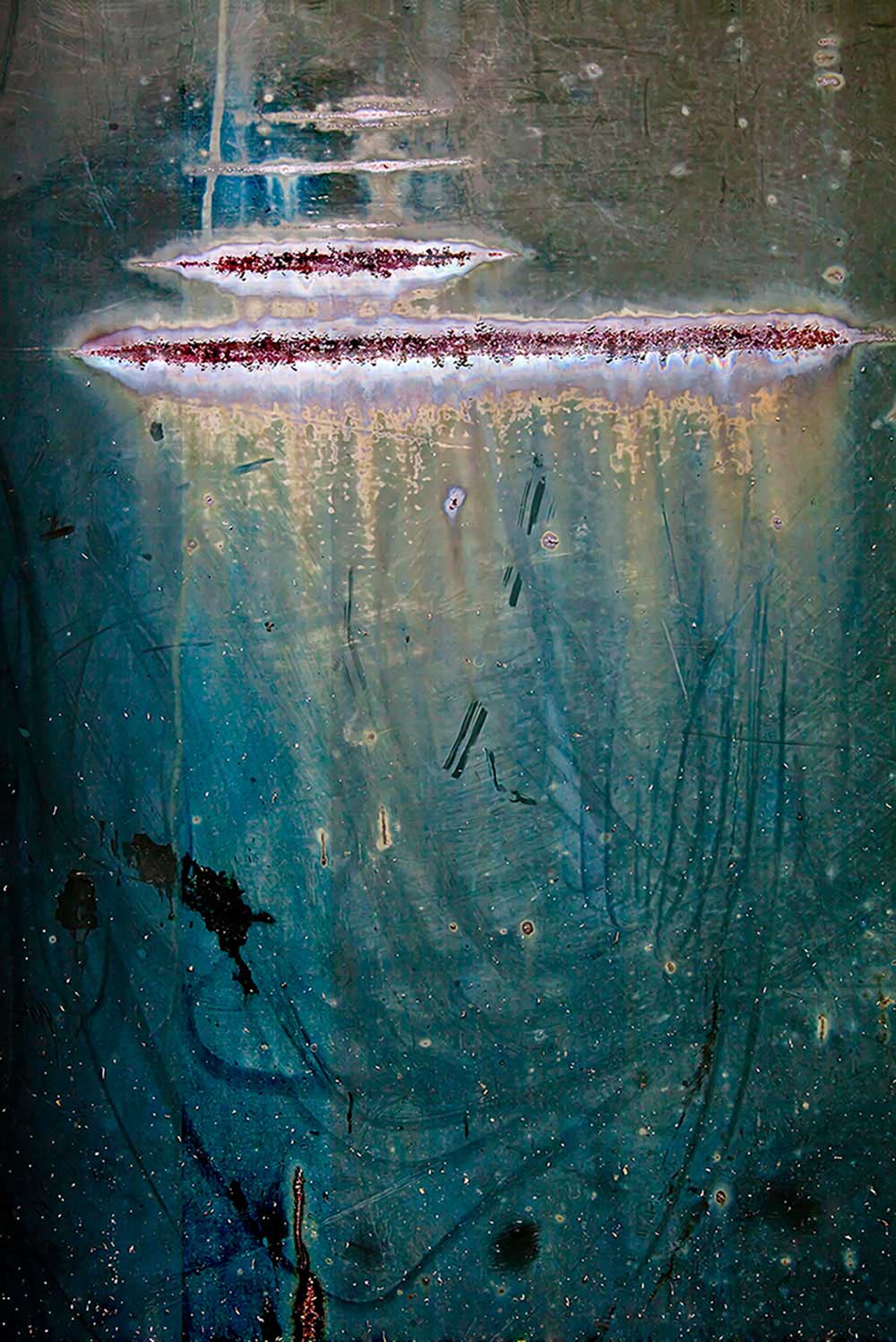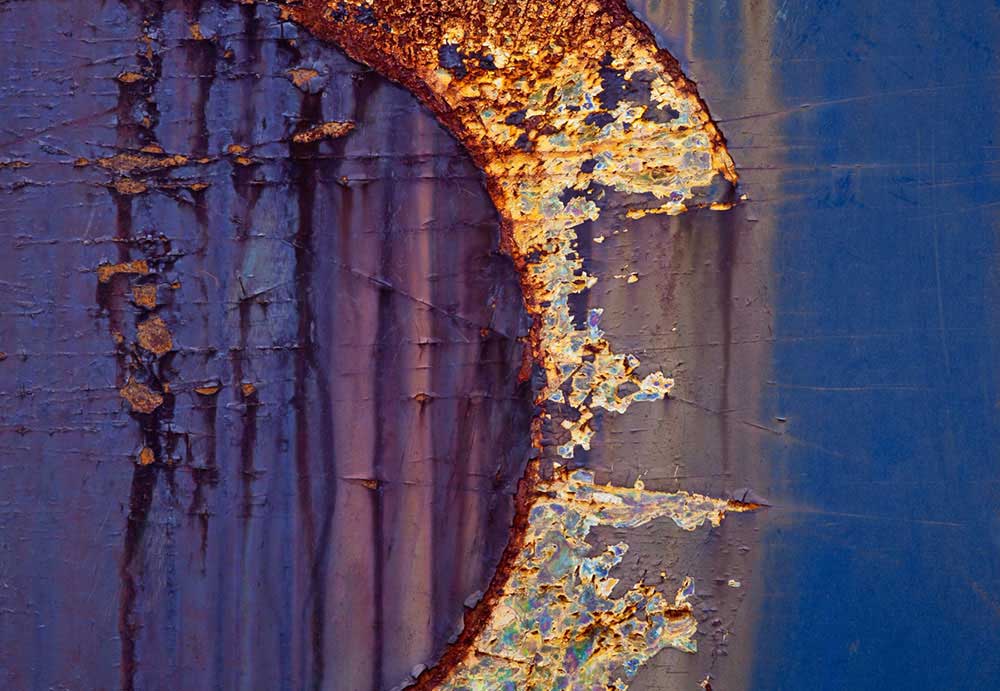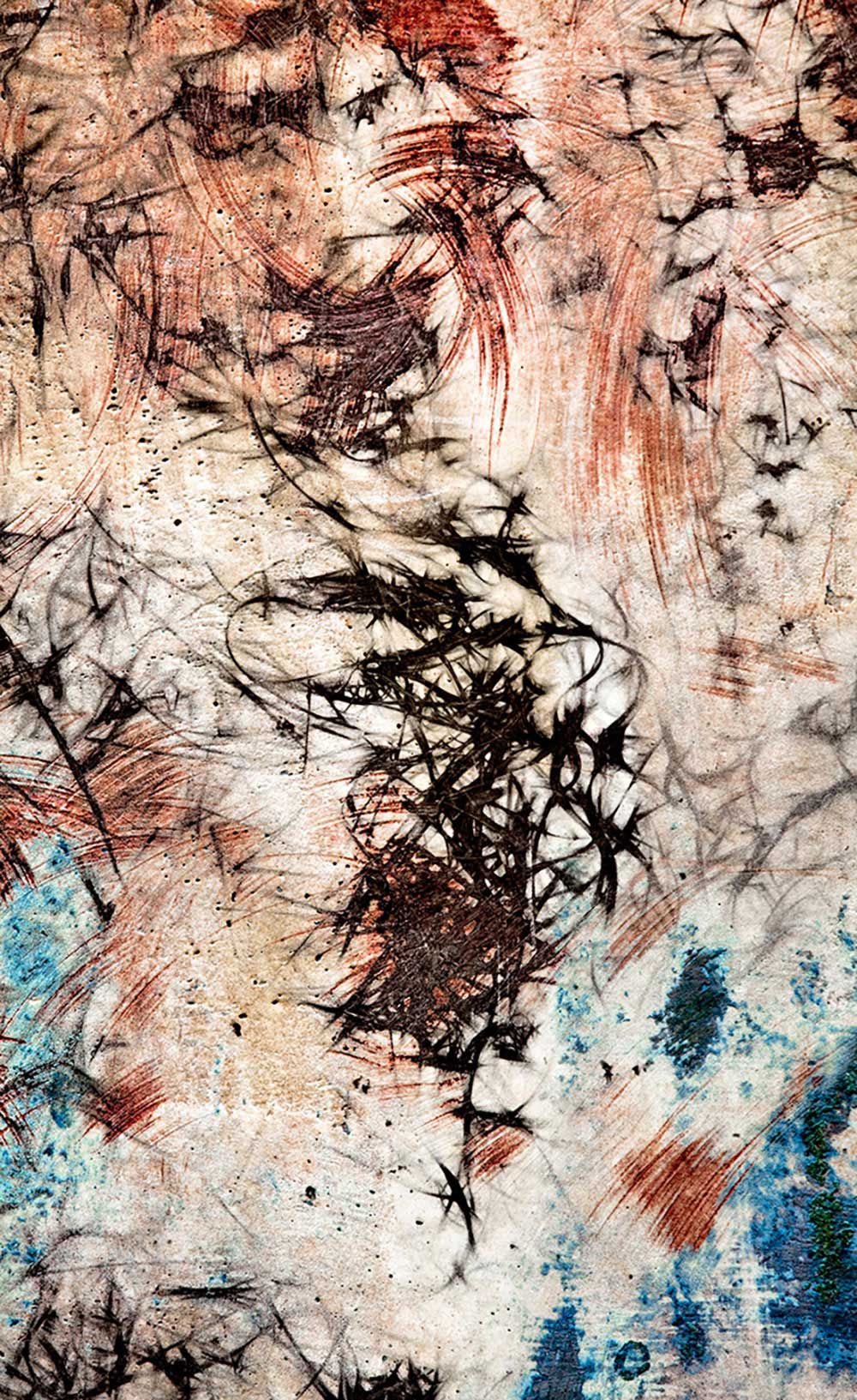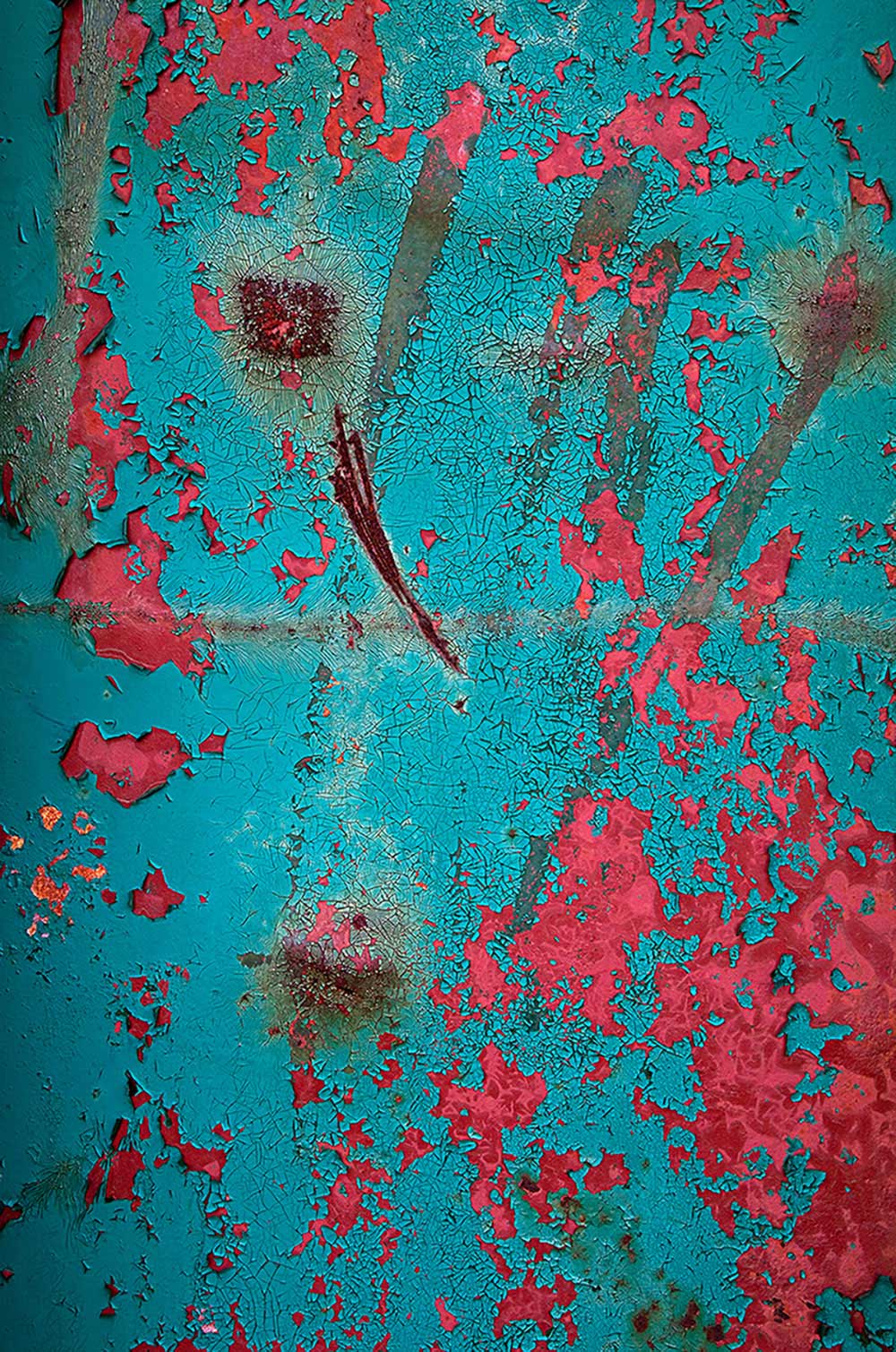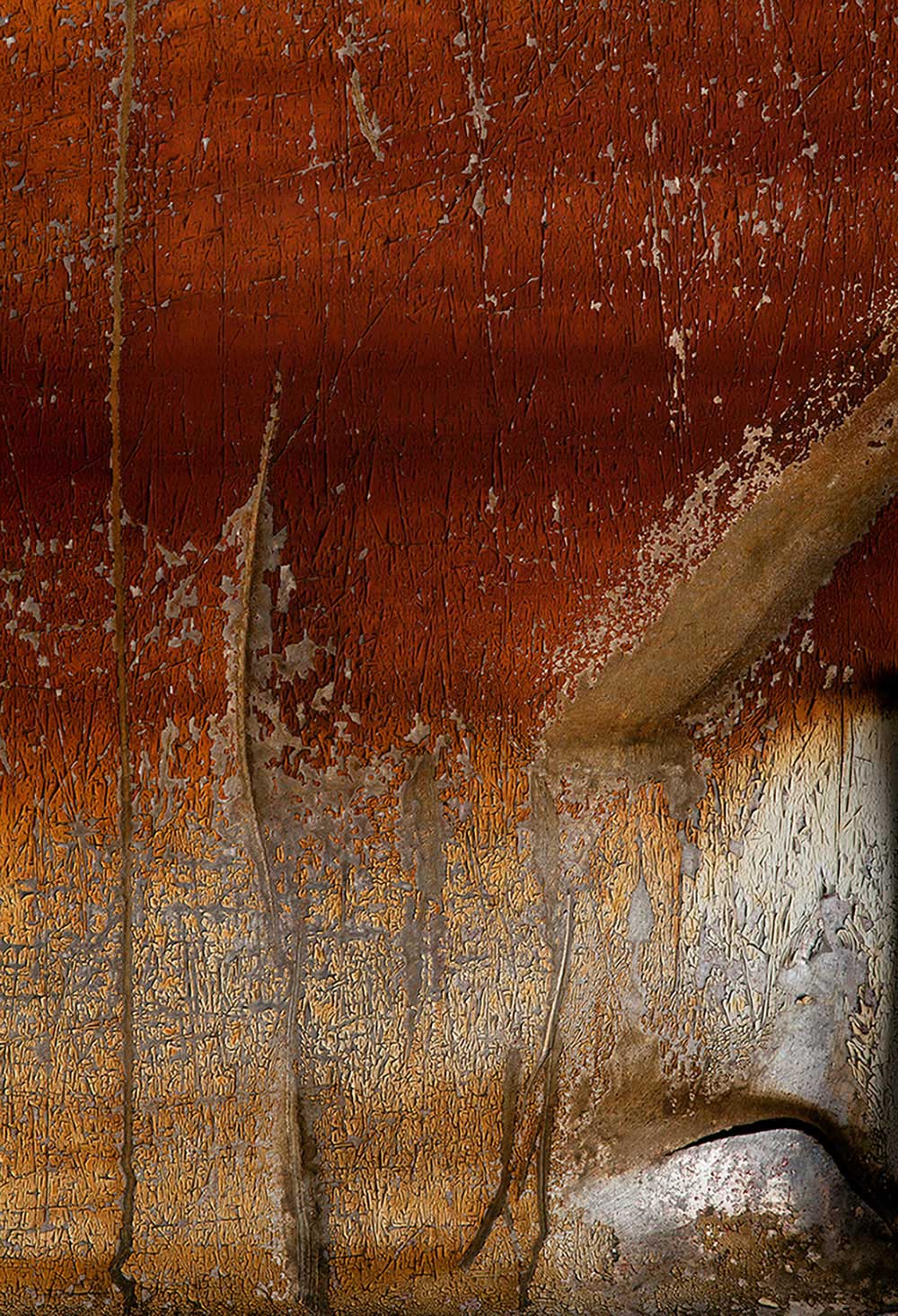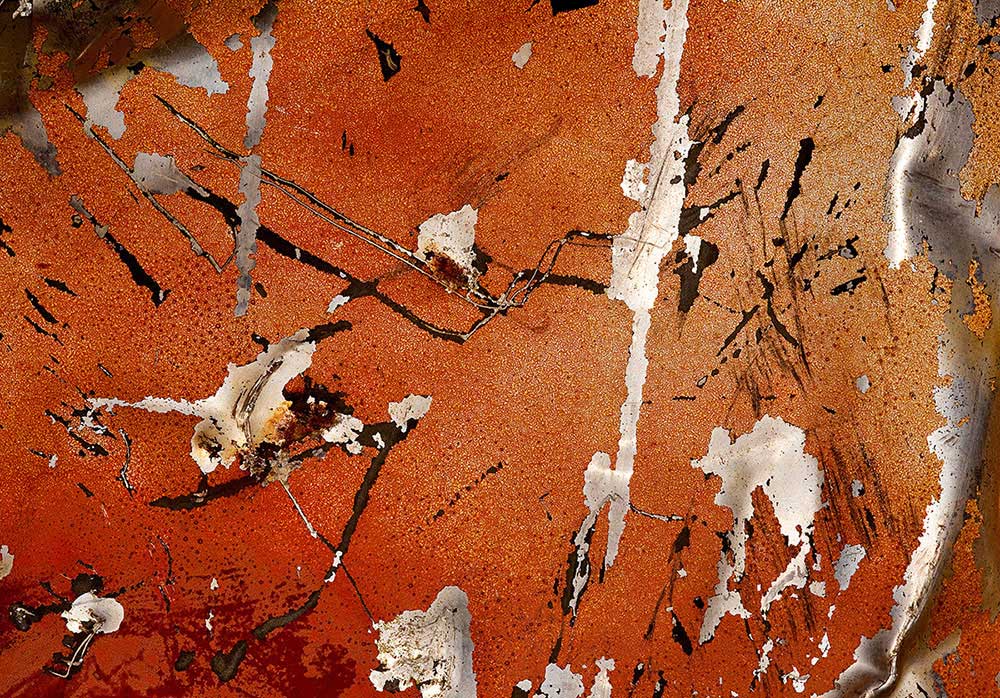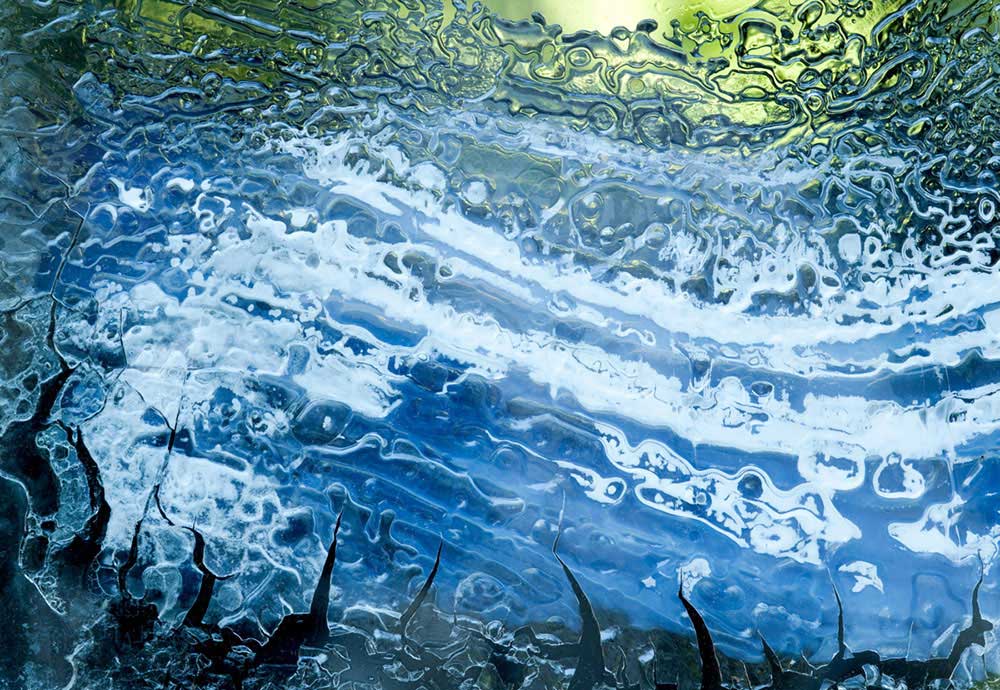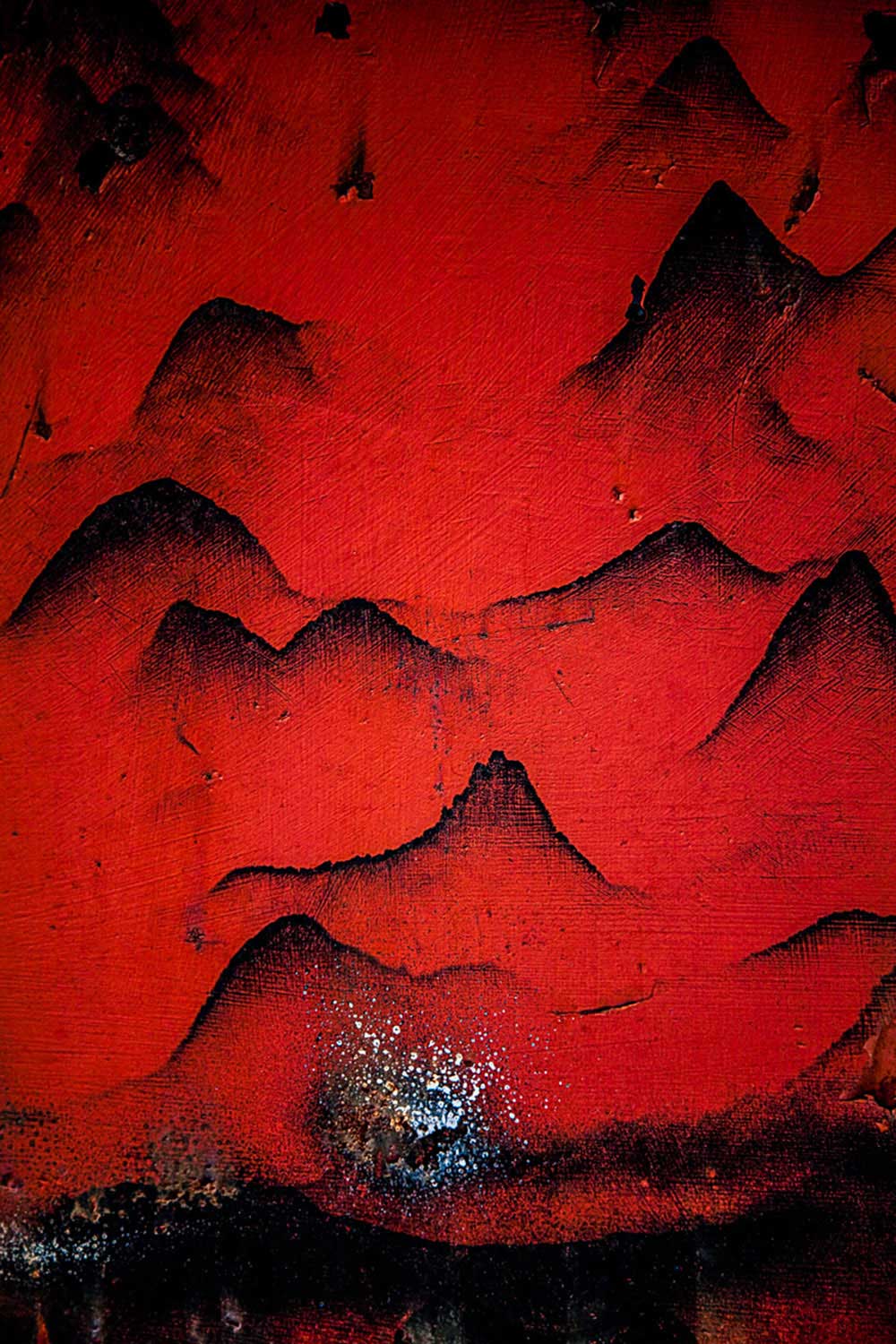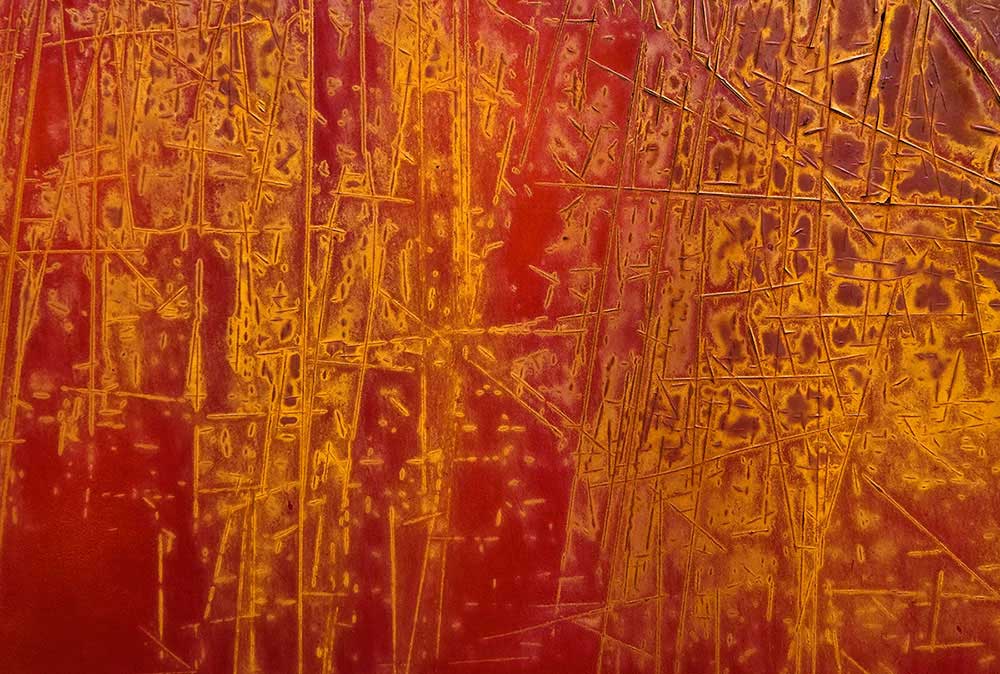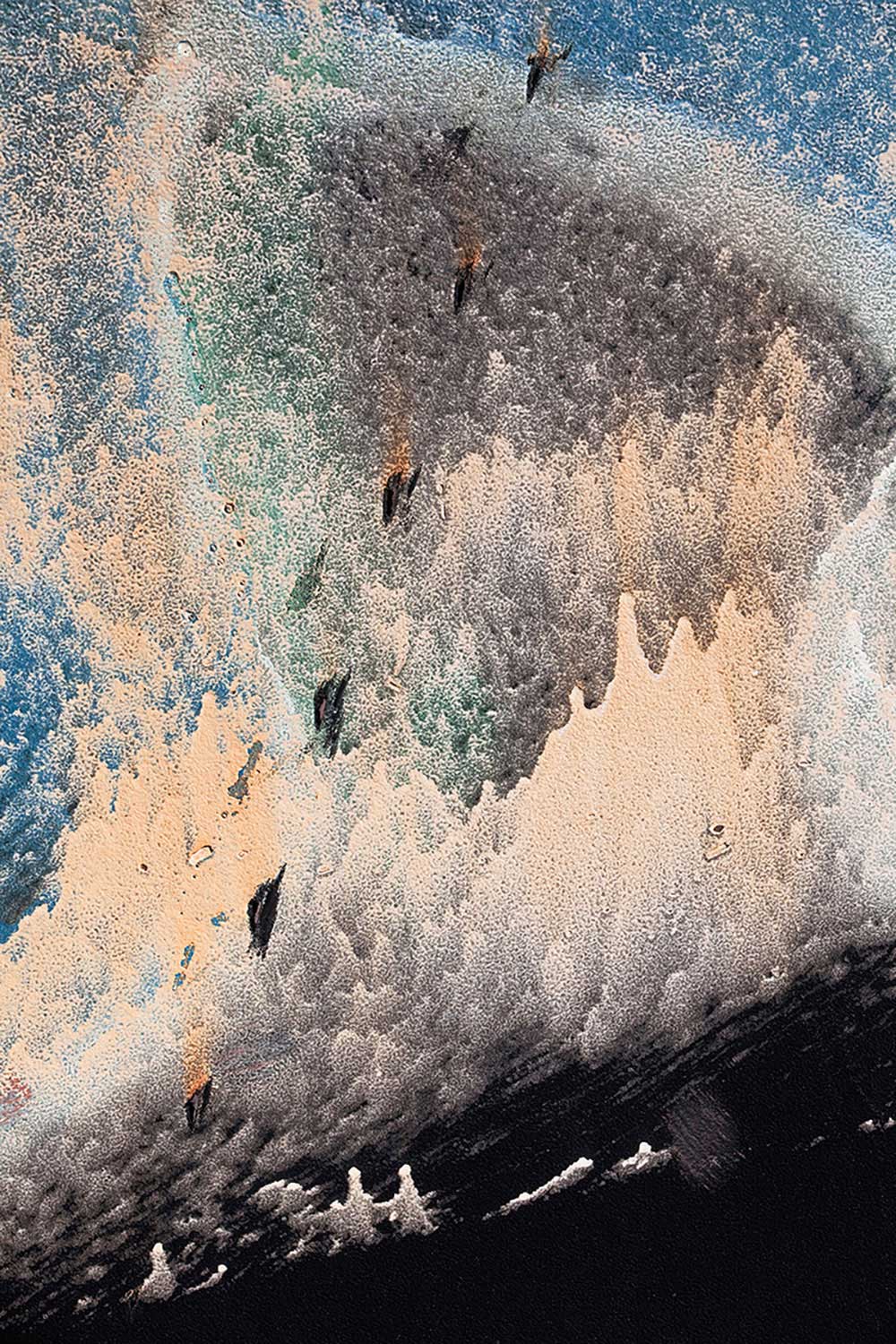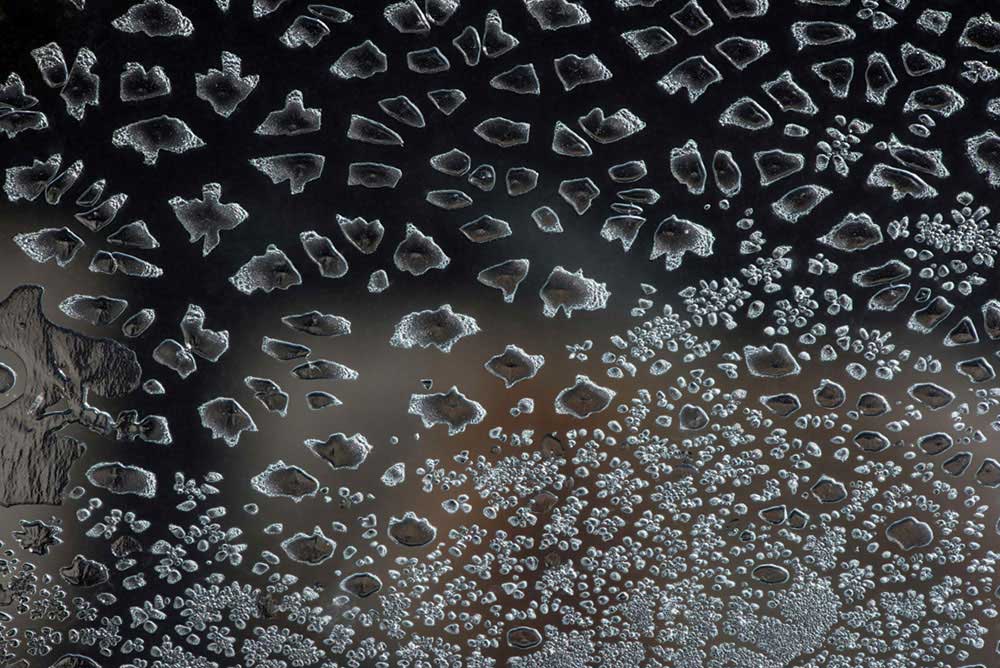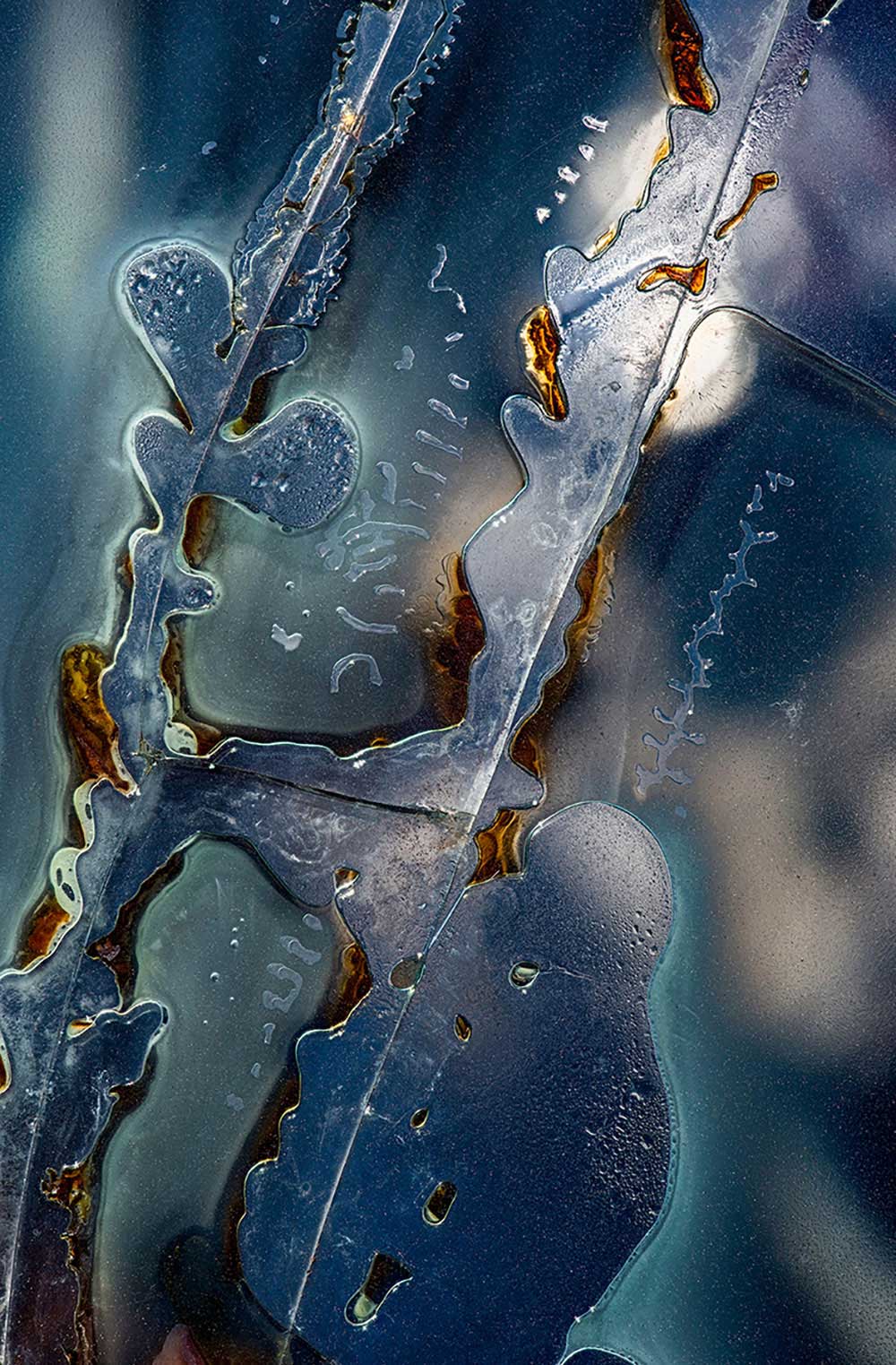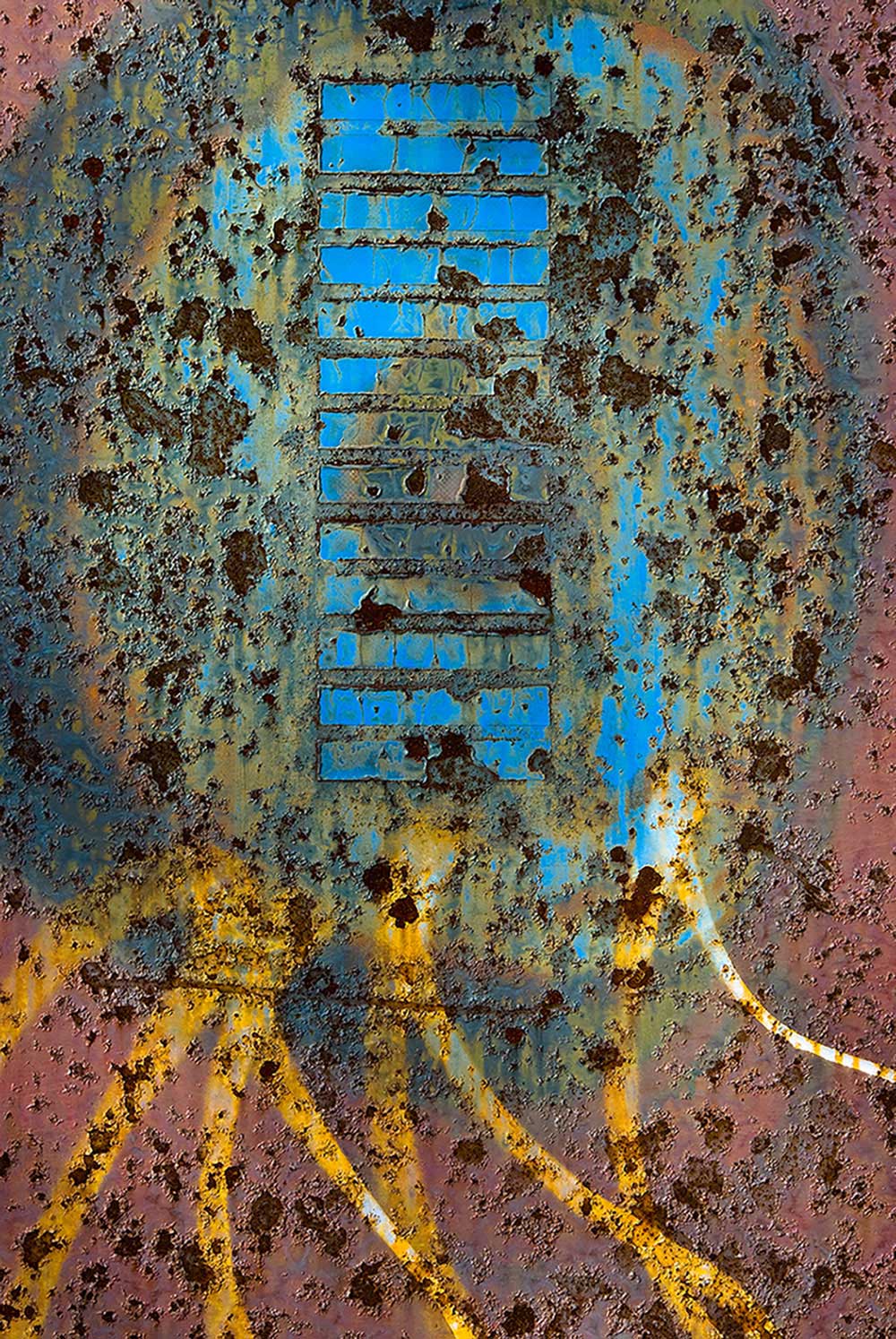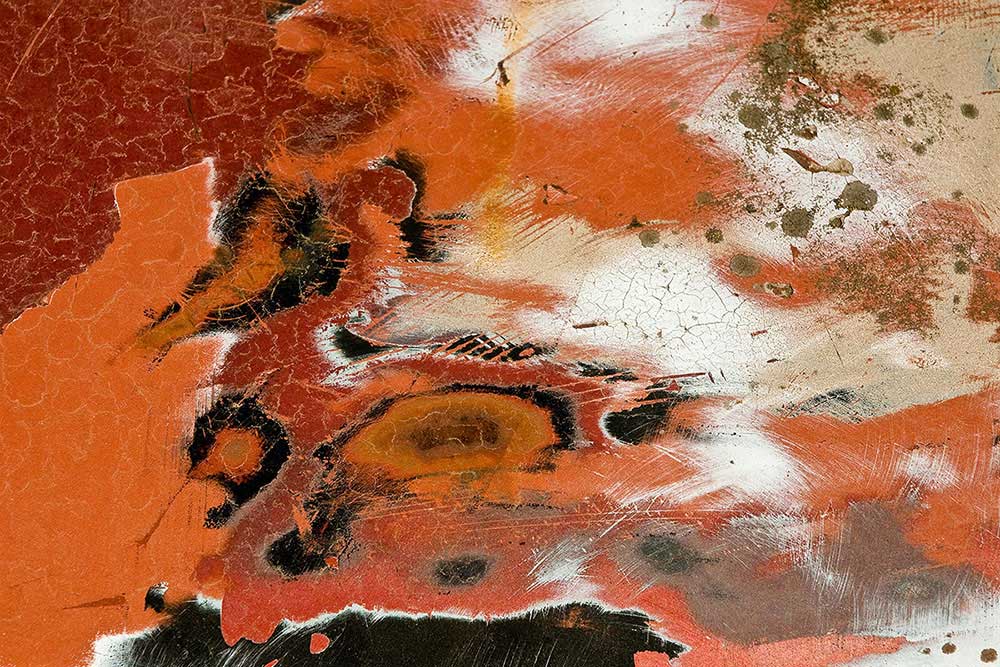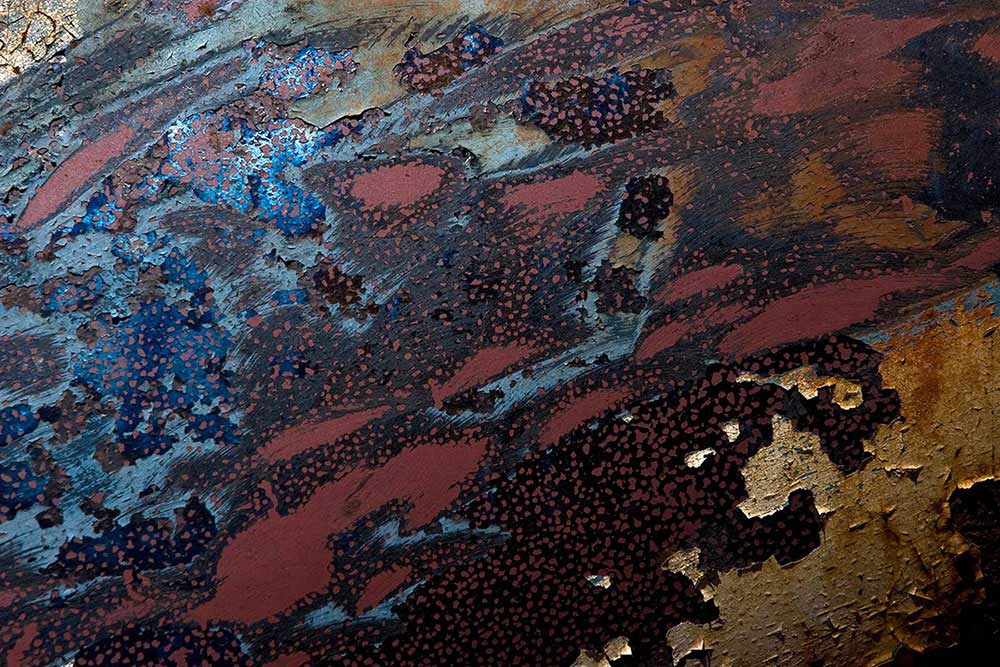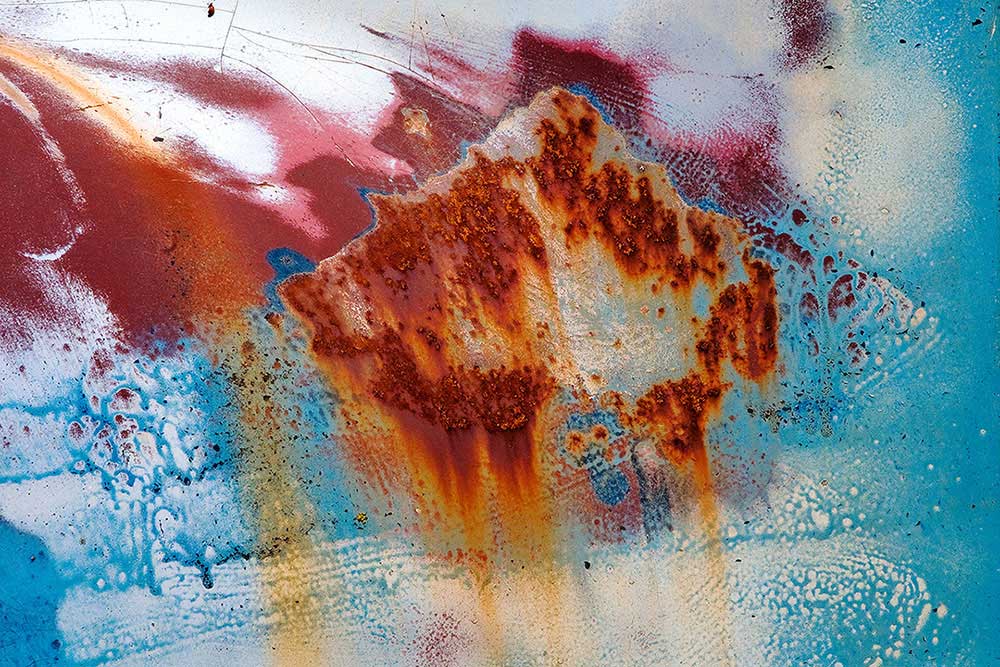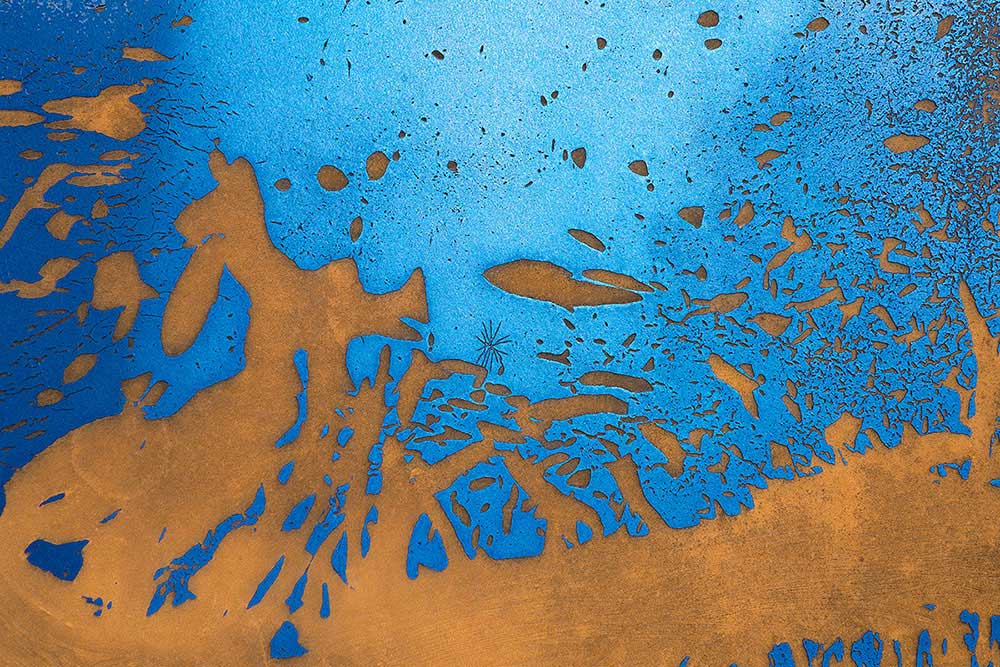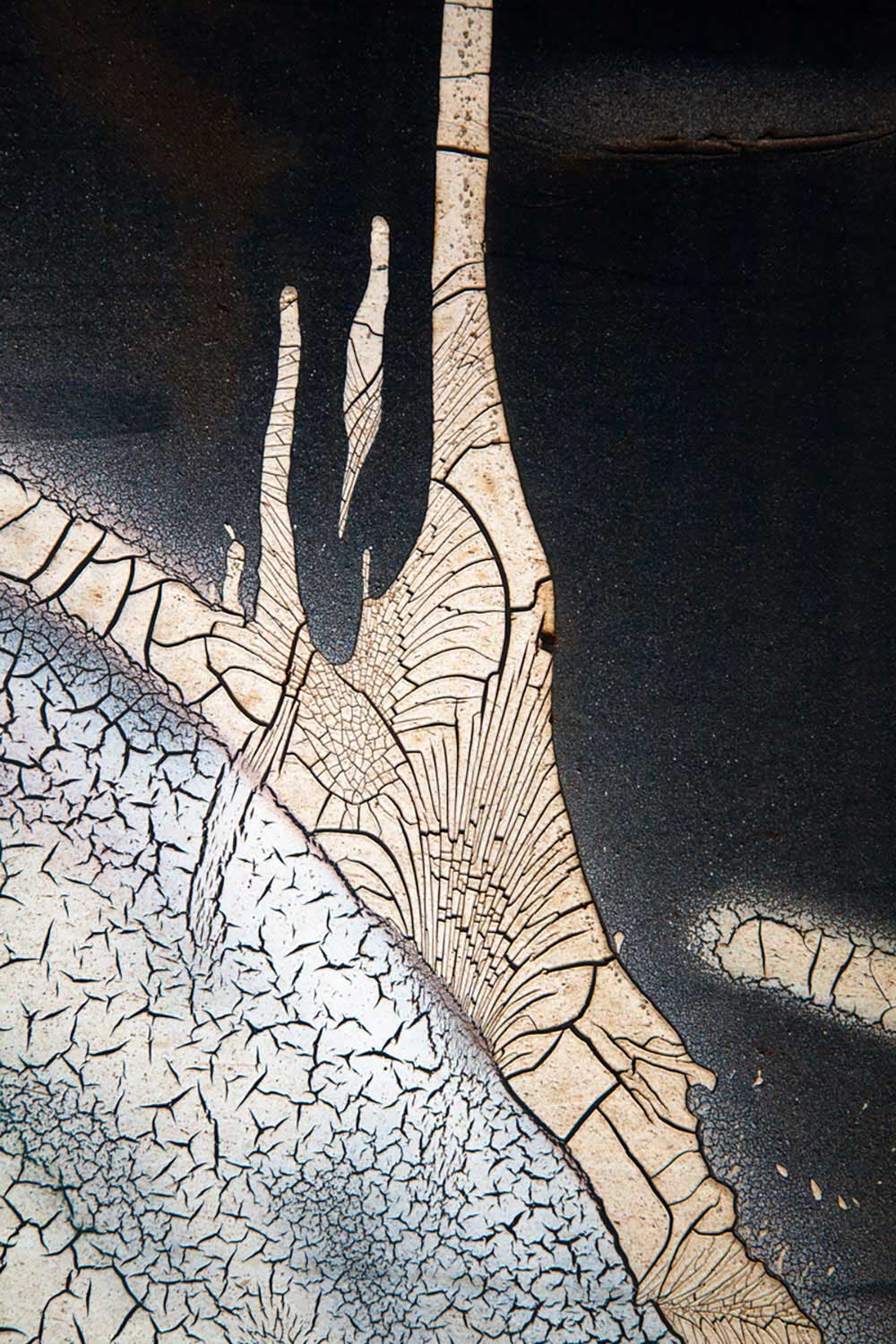I have been a habitué of classic car boneyards ever since. I bought my 1936 Pontiac at age 15.
My first go-to boneyard was Johnnie Monroe’s in South Thomaston, Maine where I sourced parts for the Pontiac as well as a ’29 Essex, a ’41 Packard and a ’54 Nash. While rummaging about I discovered incredible visual compositions in the distressed iron and glass.
These patinated compositions of line, color and texture inspired me the same way as did some of the best abstract art. This experience changed the way I viewed the world. I swapped my toolbox for a camera and started to capture this wild art. At Rhode Island School of Design I was fortunate to study with Aaron Siskind, and at The Maine Photographic Workshops (now Maine Media Workshops), took workshops with Paul Caponigro, Arnold Gassen and John Loengard which further fueled my enthusiasm. Beyond Recognition is a collection of details studies of found objects.
These images hold many levels of interest for me:
• The composition, texture, color
• The unspoken history of random events that created the subject matter, for which I can only guess or imagine
• Wabi sabi
• The interpretations expressed by viewers’ imaginations.
The images are in essence contradictory:
• despite the resulting image being my abstract perspective, the subject is an actual concrete found object.
•the object is generally something not considered beautiful, for example; a dumpster, but when taken out of context can be visually stunning.
• the subjects have changed slowly over many years to get to the point at which I find them, but despite seeming permanent and static, they, can (and do) rapidly change or disappear.
People are taught to recognize and categorize all that they see. Abstractions reach deep into personal experience and imagination. My images may evoke a memory; an emotion; something from the subconscious In a way I have a disadvantage; I know what I have photographed. Anyone else viewing my photographs is unencumbered by the influence of certain recognition and has a free range of imagination with which to appreciate them. My work is interactive; it starts a discussion.
«It’s not what you look at that matters, it’s what you see.»
– Henry David Thoreau



